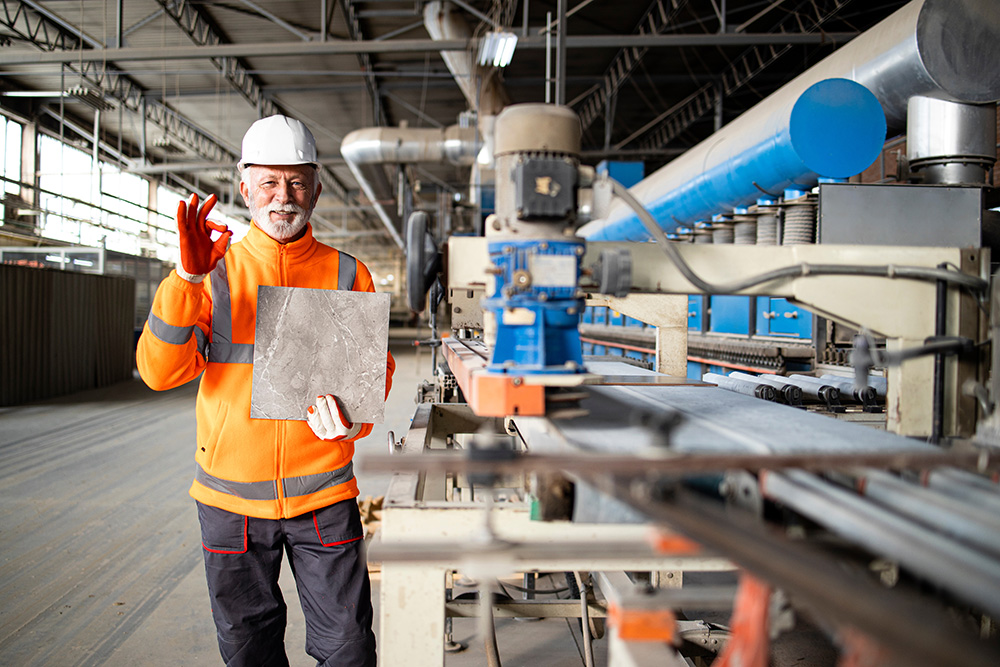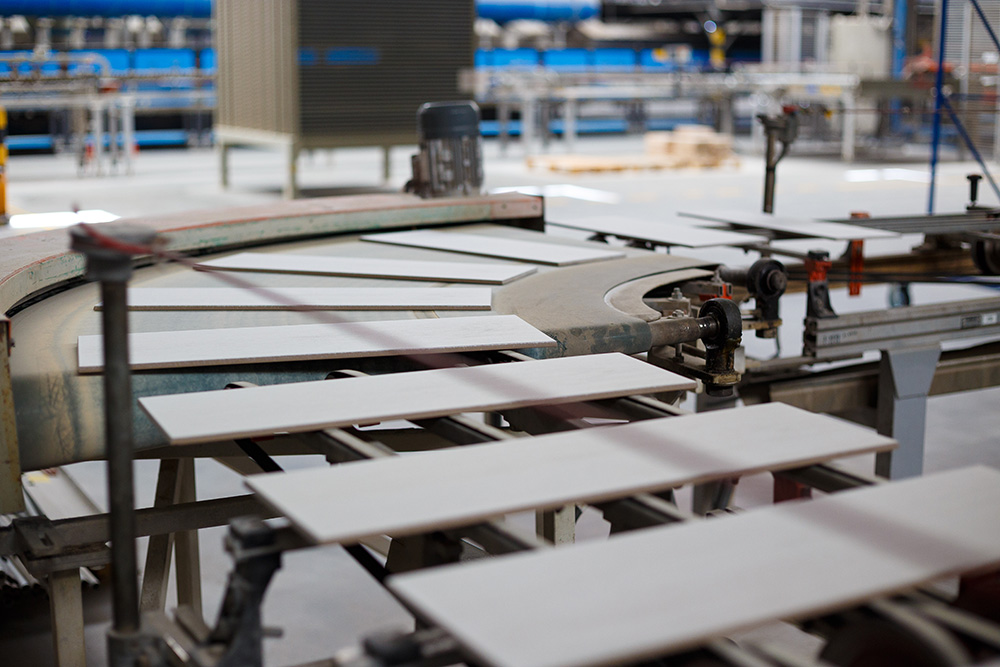A lot of people think that ceramic and porcelain are the same material, which is why the two words are often used interchangeably. But, there’s a difference between both materials, which are based on their properties and usages. Porcelain is a type of ceramic, but its manufacturing process includes heating it to a hot enough temperature that it would have certain material properties. That’s why porcelain products are more expensive.
Porcelain tile is heated to a temperature of 21,632 – 25,232 degrees Fahrenheit, which is what gives this material its vitreous and glassy look. This can include translucence, which will allow light to pass through it, but diffuses it so objects on the other side aren’t clearly visible. The composition of porcelain can also vary, depending on what it’s being used for. Kaolin is the main raw material used in manufacturing porcelain, but smaller quantities of clay materials are also present (which is there to improve its plasticity).
Some of the other raw materials that may be present in porcelain tile can include:
- Feldspar
- Ball clay
- Glass
- Bone ash
- Steatite
- Quartz
- Petuntse
- Alabaster
Ceramic can be either dense or lightweight, depending on how its produced. While it’s considered to be a hard material, it’s very brittle. But, it has become one of the most essential materials for manufacturing a variety of products.

Manufacturing Processes for Porcelain Tile
The manufacturing process for porcelain tile flooring consists of six main steps:
- Crushing and grinding of raw materials to the desired size.
- Removal of over-sized materials by screening or sieving.
- Adding water to get the desired consistency.
- Forming the body of the porcelain (which can vary depending on the material).
- Heating of the formed material at a very low temperature. This is done to vaporize volatile contaminants and to minimize shrinkage when it’s fired.
The last two processes are called “glazing” and “firing,” which is when the final product has been formed. The higher firing temperature will drive out more water. And when the feldspar is melted, it will form a low-order glass (which makes it much more impervious). According to the Tile Council of North America (TCNA), a porcelain product must have a water absorption rate that’s less than or equal to 0.5%.
Manufacturing Processes for Ceramic Tile
The raw materials used to make ceramic tile flooring are clay, powders, water, and a variety of other earthen elements. All of these ingredients are well mixed and shaped into whatever form is desired. These shaped materials are then fired at a high temperature inside a kiln. Usually, they’re covered with decorative, waterproof materials called “glazes.”
Ceramic tile is usually made by mixing a clay base with different types of minerals and water. This mixture will then be fired at a temperature of 1,800-2,000 degrees Fahrenheit and will have a water absorption rate of 0.5-3.0%. Some types of ceramic tile will be as high as 20%.
Properties of Ceramic and Porcelain Tile
Porcelain tile flooring is durable, resistant to dust, and practically impermeable. For ceramic tile, its properties are determined by the following:
- Its atomic scale structure
- The types of atoms that are present
- The types of bonding between the atoms
- How the atoms are packed together
The most common bonding type for ceramic materials are the ionic and covalent bonds. But, they can have a variety of properties, which can include the following:
- Hard
- Wear-resistant
- Brittle
- Refractory
- Thermal insulators
- Electrical insulators
- Nonmagnetic
- Oxidation resistant
- Prone to thermal shock
Be sure to speak to a professional for more information.

Applications for Ceramic and Porcelain
Porcelain materials are often used to make several different products, which can include the following:
- Insulating materials
- Building materials
- Bathroom fittings
- Loudspeaker casings
Ceramic products are often used to make a variety of structural materials (such as bricks and pipes), but they can also be used in floor and wall tiles. You can even find them being used in any of the following:
- Kiln linings
- Gas fire radiants
- Cookware
- Pottery
- Tableware
- Engineering materials
Ceramic can be found in a number of other products, which can include, but may not be limited to:
- Watches
- Snow skis
- Automobiles
- Phone lines
- Space shuttles
- Airplanes
- Appliances
It’s an inorganic material with many different types. It can conduct electricity, but it can also serve as an insulator (which can stop the flow of electricity). Some ceramics will even have superconductive and magnetic properties.
If you’re looking for one of the best tile stores in Corpus Christi, be sure to reach out to Tile Source of Texas.


 (361) 853-5600
(361) 853-5600